1. Introduction
High power narrow-linewidth nanosecond lasers have attracted much attention for a range of applications such as LIDAR[Reference Liu, Liu and Chen1–Reference Zhu, Liu, Bi, Zhou, Diao and Chen3], nonlinear frequency conversion[Reference Shi, Leigh, Zong, Yao and Jiang4–Reference Wu, Ren, Zhou, Du and Liu6], and coherent beam combinations[Reference Su, Zhou, Wang, Zhang and Xu7–Reference Lombard, Azarian, Cadoret, Bourdon, Goular, Canat, Jolivet, Jaouën and Vasseur9]. For nonlinear frequency conversion applications such as the optical parametric oscillator (OPO)[Reference Peuser, Platz, Fix, Ehret, Meister, Haag and Zolichowski10, Reference Peremans, Lis, Cecchet, Schunemann, Zawilski and Petrov11] and second-harmonic generation (SHG)[Reference Liu, Norsen and Mead5, Reference Wu, Ren, Zhou, Du and Liu6], narrow-linewidth pulses can offer high conversion efficiency. Narrow-linewidth lasers are also desirable for coherent beam combinations, which are a promising way to scale the overall output power while maintaining the beam quality[Reference Zhou, Liu, Wang, Ma, Ma, Xu and Guo12–Reference He, Lou, Zhou, Dong, Wei, Xue, Qi, Su, Li and Zhang15]. The all-fiber monolithic configuration, which has the unique advantages of robustness, compactness, and low maintenance, has been employed to generate narrow-linewidth nanosecond pulses in recent years. Shi et al.
[Reference Shi, Petersen, Nguyen, Yao, Chavez-Pirson, Peyghambarian and Yu16] and Geng et al.
[Reference Geng, Wang, Jiang, Luo, Jiang and Czarnecki17] have developed narrow-linewidth all-fiber actively
![]() $Q$
-switched lasers using the method of piezo-induced birefringence. Fang et al.
[Reference Fang, Shi, Petersen, Khanh, Chavez-Pirson and Peyghambarian18] and Liu et al.
[Reference Liu, Liu and Chen1] have demonstrated narrow-linewidth pulses by employing a fiber pigtailed intensity modulator. Since it is difficult to obtain high power narrow-linewidth pulses directly from an oscillator, a master oscillator power amplifier (MOPA) structure was always employed[Reference Liu, Liu and Chen1, Reference Shi, Petersen, Nguyen, Yao, Chavez-Pirson, Peyghambarian and Yu16–Reference Su, Zhou, Xiao, Wang and Xu19]. Zhu et al. have obtained
$Q$
-switched lasers using the method of piezo-induced birefringence. Fang et al.
[Reference Fang, Shi, Petersen, Khanh, Chavez-Pirson and Peyghambarian18] and Liu et al.
[Reference Liu, Liu and Chen1] have demonstrated narrow-linewidth pulses by employing a fiber pigtailed intensity modulator. Since it is difficult to obtain high power narrow-linewidth pulses directly from an oscillator, a master oscillator power amplifier (MOPA) structure was always employed[Reference Liu, Liu and Chen1, Reference Shi, Petersen, Nguyen, Yao, Chavez-Pirson, Peyghambarian and Yu16–Reference Su, Zhou, Xiao, Wang and Xu19]. Zhu et al. have obtained
![]() $\sim $
80 ns pulses with pulse energy of 220
$\sim $
80 ns pulses with pulse energy of 220
![]() $\mu $
J and repetition rate of 20 kHz from an all-fiber MPOA[Reference Shi, Petersen, Nguyen, Yao, Chavez-Pirson, Peyghambarian and Yu16], and Fang et al. generated 15 ns pulses with peak/average power of 33 kW/2.5 W[Reference Fang, Shi, Petersen, Khanh, Chavez-Pirson and Peyghambarian18]. In this paper, we report a kilowatt-level narrow-linewidth nanosecond laser for the first time, to the best of our knowledge. High average power of 913 W was obtained based on multi-stage cascaded power amplification.
$\mu $
J and repetition rate of 20 kHz from an all-fiber MPOA[Reference Shi, Petersen, Nguyen, Yao, Chavez-Pirson, Peyghambarian and Yu16], and Fang et al. generated 15 ns pulses with peak/average power of 33 kW/2.5 W[Reference Fang, Shi, Petersen, Khanh, Chavez-Pirson and Peyghambarian18]. In this paper, we report a kilowatt-level narrow-linewidth nanosecond laser for the first time, to the best of our knowledge. High average power of 913 W was obtained based on multi-stage cascaded power amplification.
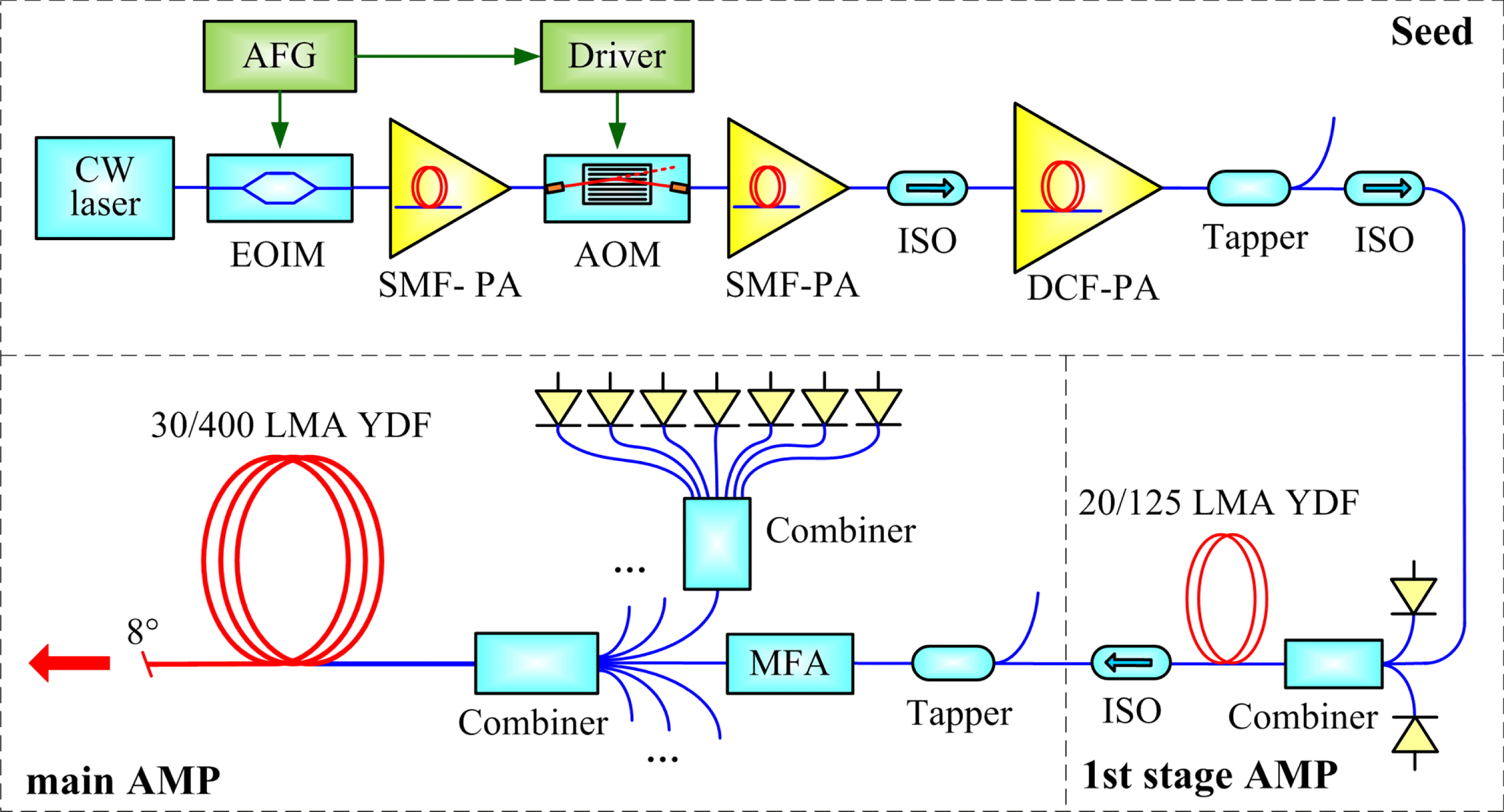
Figure 1. Schematic of the nanosecond all-fiber MOPA laser system.
2. Experimental setup and results
Figure 1 shows the experimental setup, which consisted of a seed-generating system and a two-stage large mode area (LMA) Yb-doped fiber based amplifier system. A
![]() $\sim $
1064 nm single-frequency continuous-wave (CW) laser with 20 kHz linewidth and 40 mW output power[Reference Xu, Yang, Zhang, Wei, Qian, Chen, Zhang, Shen, Peng and Qiu20] was directly modulated by using an electro-optic intensity modulator (EOIM) with a high bandwidth of
$\sim $
1064 nm single-frequency continuous-wave (CW) laser with 20 kHz linewidth and 40 mW output power[Reference Xu, Yang, Zhang, Wei, Qian, Chen, Zhang, Shen, Peng and Qiu20] was directly modulated by using an electro-optic intensity modulator (EOIM) with a high bandwidth of
![]() $>$
10 GHz. An acousto-optic modulator (AOM) with optical rise-time of 30 ns was used to remove the leakage between the pulses and increase the extinction ratio[Reference Fang, Shi, Petersen, Khanh, Chavez-Pirson and Peyghambarian18]. Both the EOIM and AOM were synchronously driven by an arbitrary function generator (AFG). The pulse width and repetition rate of the optical pulses were set to be
$>$
10 GHz. An acousto-optic modulator (AOM) with optical rise-time of 30 ns was used to remove the leakage between the pulses and increase the extinction ratio[Reference Fang, Shi, Petersen, Khanh, Chavez-Pirson and Peyghambarian18]. Both the EOIM and AOM were synchronously driven by an arbitrary function generator (AFG). The pulse width and repetition rate of the optical pulses were set to be
![]() $\sim $
3 ns and 10 MHz. Because of intensity modulation induced loss and insertion loss of the EOIM, pulses from the EOIM had an average power of only
$\sim $
3 ns and 10 MHz. Because of intensity modulation induced loss and insertion loss of the EOIM, pulses from the EOIM had an average power of only
![]() $\sim $
0.5 mW. Two Yb-doped single-mode fiber based pre-amplifiers (SMF-PAs) were located after the EOIM and AOM, respectively, and the average power of these pulses was boosted to
$\sim $
0.5 mW. Two Yb-doped single-mode fiber based pre-amplifiers (SMF-PAs) were located after the EOIM and AOM, respectively, and the average power of these pulses was boosted to
![]() $\sim $
100 mW. In order to provide a pulsed seed with enough power for the LMA Yb-doped fiber based amplifiers, another Yb-doped double-cladding fiber pre-amplifier (DCF-PA) was built to amplify the average power to be
$\sim $
100 mW. In order to provide a pulsed seed with enough power for the LMA Yb-doped fiber based amplifiers, another Yb-doped double-cladding fiber pre-amplifier (DCF-PA) was built to amplify the average power to be
![]() $\sim $
3 W. The DCF has a core diameter of 15
$\sim $
3 W. The DCF has a core diameter of 15
![]() $\mu $
m. A tapper was set after the DCF-PA to monitor the pulse seed, and isolators (ISOs) were used to protect the components by preventing backward light such as amplified spontaneous emission (ASE) and stimulated Brillouin scattering (SBS) induced Stokes waves.
$\mu $
m. A tapper was set after the DCF-PA to monitor the pulse seed, and isolators (ISOs) were used to protect the components by preventing backward light such as amplified spontaneous emission (ASE) and stimulated Brillouin scattering (SBS) induced Stokes waves.
The linewidth of the pulsed seed was measured from the tapper by using a Fabry–Perot interferometer with a spectral range of 4 GHz, as shown in Figure 2. The full width at half maximum of spectral linewidth can be estimated to be
![]() $\sim $
220 MHz. Then the pulsed seed was amplified by two LMA Yb-doped fiber based amplifiers to an average power of 21 W and 913 W, respectively. The first-stage amplifier was based on a Yb-doped fiber with core diameter of 20
$\sim $
220 MHz. Then the pulsed seed was amplified by two LMA Yb-doped fiber based amplifiers to an average power of 21 W and 913 W, respectively. The first-stage amplifier was based on a Yb-doped fiber with core diameter of 20
![]() $\mu $
m. The Yb-doped fiber was cladding pumped by two multimode double-clad fiber pigtailed 976 nm laser diodes via a
$\mu $
m. The Yb-doped fiber was cladding pumped by two multimode double-clad fiber pigtailed 976 nm laser diodes via a
![]() $(2+1)\times 1$
signal/pump combiner. Another tapper connected after the first-stage amplifier was used to monitor the backward power of the main amplifier. Devices may be destroyed if nonlinear increasing of the backward power occurs because of the undesired SBS, which is always the limitation for a narrow-linewidth fiber laser. A mode-field adaptor (MFA) was spliced to the tapper to improve the coupling of the first-stage amplifier with the main amplifier based on an Yb-doped fiber with core/inner-cladding diameter of 30/400
$(2+1)\times 1$
signal/pump combiner. Another tapper connected after the first-stage amplifier was used to monitor the backward power of the main amplifier. Devices may be destroyed if nonlinear increasing of the backward power occurs because of the undesired SBS, which is always the limitation for a narrow-linewidth fiber laser. A mode-field adaptor (MFA) was spliced to the tapper to improve the coupling of the first-stage amplifier with the main amplifier based on an Yb-doped fiber with core/inner-cladding diameter of 30/400
![]() $\mu $
m. The cladding absorption at 976 nm is
$\mu $
m. The cladding absorption at 976 nm is
![]() $>$
3 dB/m in this fiber, so we used a 6 m active fiber for full absorbing of the pump power in the experiment. The signal/pump combiner of the main amplifier has six pump arms. Each arm was spliced with a
$>$
3 dB/m in this fiber, so we used a 6 m active fiber for full absorbing of the pump power in the experiment. The signal/pump combiner of the main amplifier has six pump arms. Each arm was spliced with a
![]() $7\times 1$
pump power combiner, which coupled seven laser diodes with output power of 25–32 W into one fiber and provided enough pump power of 180–200 W for the main amplifier. A
$7\times 1$
pump power combiner, which coupled seven laser diodes with output power of 25–32 W into one fiber and provided enough pump power of 180–200 W for the main amplifier. A
![]() $\sim 8^{\circ }$
angle was polished at the output port of the fiber to avoid signal feedback and prevent end facet damage.
$\sim 8^{\circ }$
angle was polished at the output port of the fiber to avoid signal feedback and prevent end facet damage.
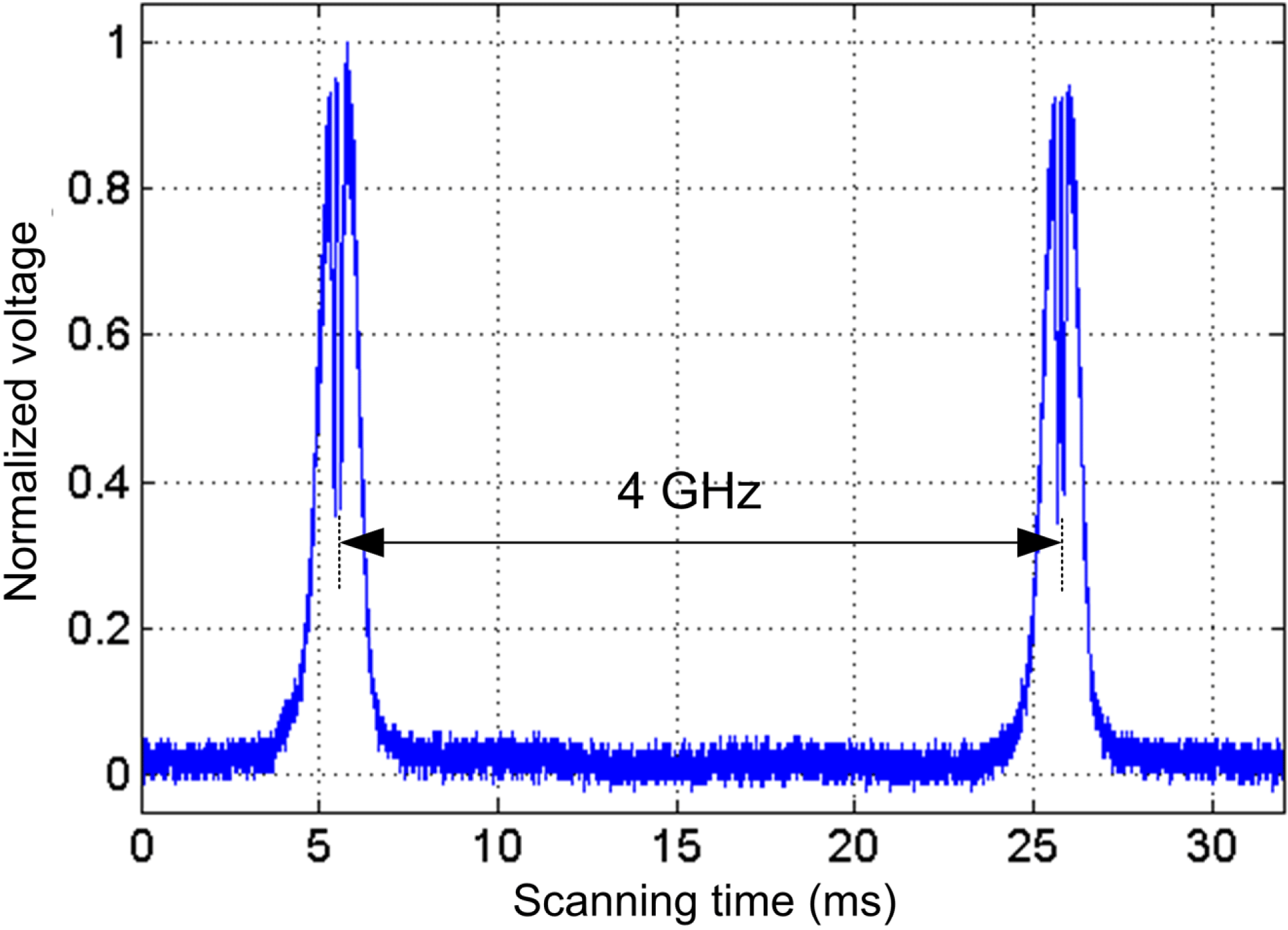
Figure 2. Spectrum of the pulsed seed obtained using a Fabry–Perot interferometer.
Figure 3 shows the amplified output power as a function of the pump power. The maximum average output power of 913 W (corresponding to a pulse energy of 91.3
![]() $\mu $
J) was obtained at a pump power of 1085 W. The overall amplifier slope efficiency was calculated to be 82%. The nonlinear increase of the backward power was not observed in the main amplifier, which means that the SBS was effectively suppressed. This could be attributed to the short pulse width of the pulses, since the medium response in SBS is governed by the acoustic phonon lifetime of
$\mu $
J) was obtained at a pump power of 1085 W. The overall amplifier slope efficiency was calculated to be 82%. The nonlinear increase of the backward power was not observed in the main amplifier, which means that the SBS was effectively suppressed. This could be attributed to the short pulse width of the pulses, since the medium response in SBS is governed by the acoustic phonon lifetime of
![]() $\sim $
10 ns[Reference Agrawal21]. If the pump pulse becomes shorter than the acoustic phonon lifetime, less energy can be transferred to the Stokes pulse and the SBS threshold increases. SBS eventually ceases to occur for laser pulses with pulse width smaller than the phonon lifetime[Reference Liu, Norsen and Mead5, Reference Agrawal21].
$\sim $
10 ns[Reference Agrawal21]. If the pump pulse becomes shorter than the acoustic phonon lifetime, less energy can be transferred to the Stokes pulse and the SBS threshold increases. SBS eventually ceases to occur for laser pulses with pulse width smaller than the phonon lifetime[Reference Liu, Norsen and Mead5, Reference Agrawal21].
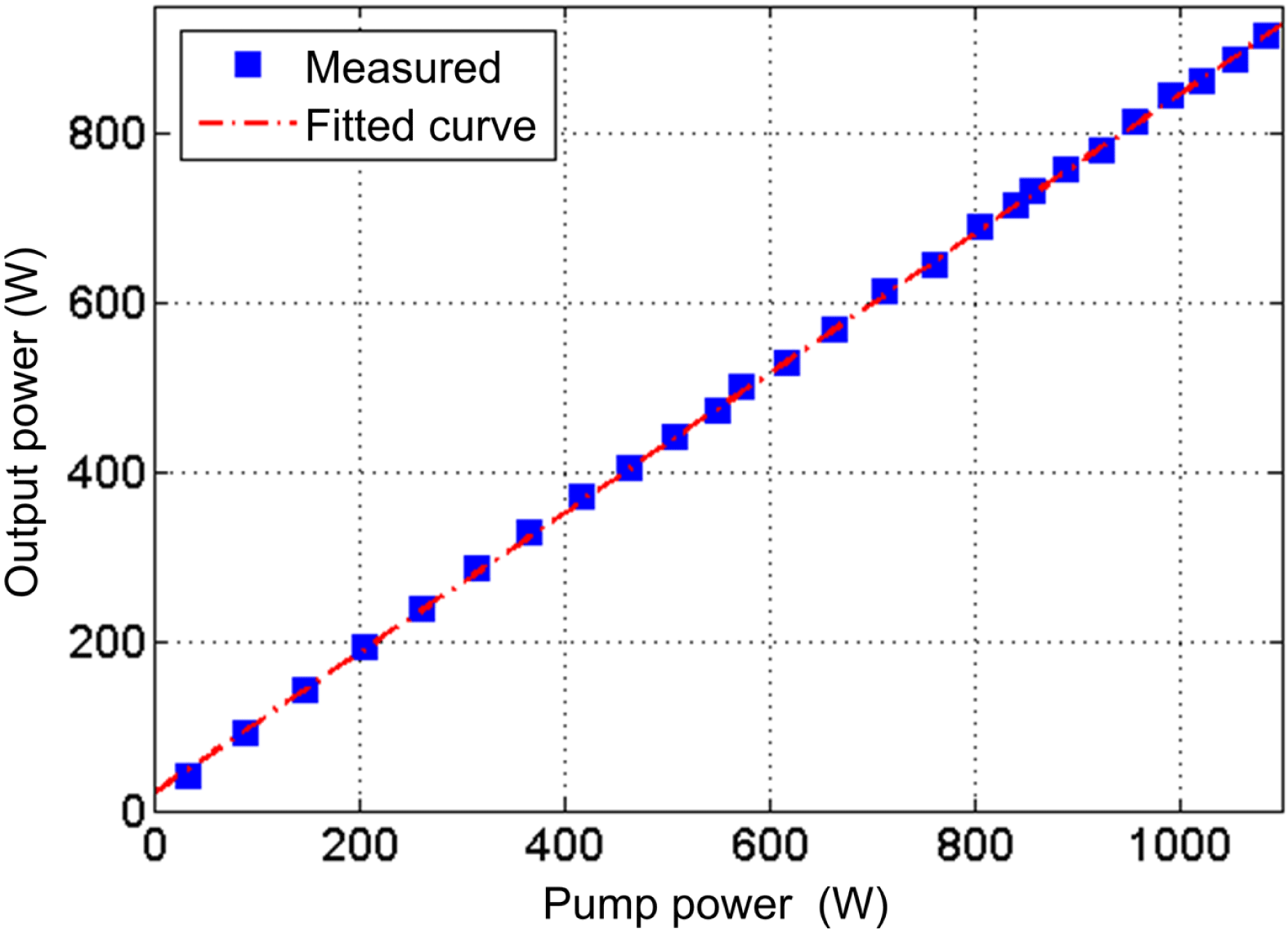
Figure 3. Output power of the main amplifier with the pump power.
Figure 4 shows the pulse shapes of the output laser pulses. It can be found from Figure 4(b) that the amplified pulses were slightly compressed. The temporal full width at half maximum of the pulse
![]() $(t_{\mathrm{FWHM}})$
was
$(t_{\mathrm{FWHM}})$
was
![]() $\sim $
3 ns. Using the formula of Gaussian-like pulses given by
$\sim $
3 ns. Using the formula of Gaussian-like pulses given by
![]() $P_{\mathrm{peak}}=2(\ln 2/\pi )^{\mathrm{1/2}}P_{\mathrm{ave}}/(t_{\mathrm{FWHM}}f_{\mathrm{RR}})$
[Reference Leigh, Shi, Zong, Wang, Jiang and Peyghambarian22], the maximum peak power can be approximately calculated to be 28.6 kW, where
$P_{\mathrm{peak}}=2(\ln 2/\pi )^{\mathrm{1/2}}P_{\mathrm{ave}}/(t_{\mathrm{FWHM}}f_{\mathrm{RR}})$
[Reference Leigh, Shi, Zong, Wang, Jiang and Peyghambarian22], the maximum peak power can be approximately calculated to be 28.6 kW, where
![]() $P_{\mathrm{ave}}$
is the average power and
$P_{\mathrm{ave}}$
is the average power and
![]() $f_{\mathrm{RR}}$
is the repetition rate.
$f_{\mathrm{RR}}$
is the repetition rate.
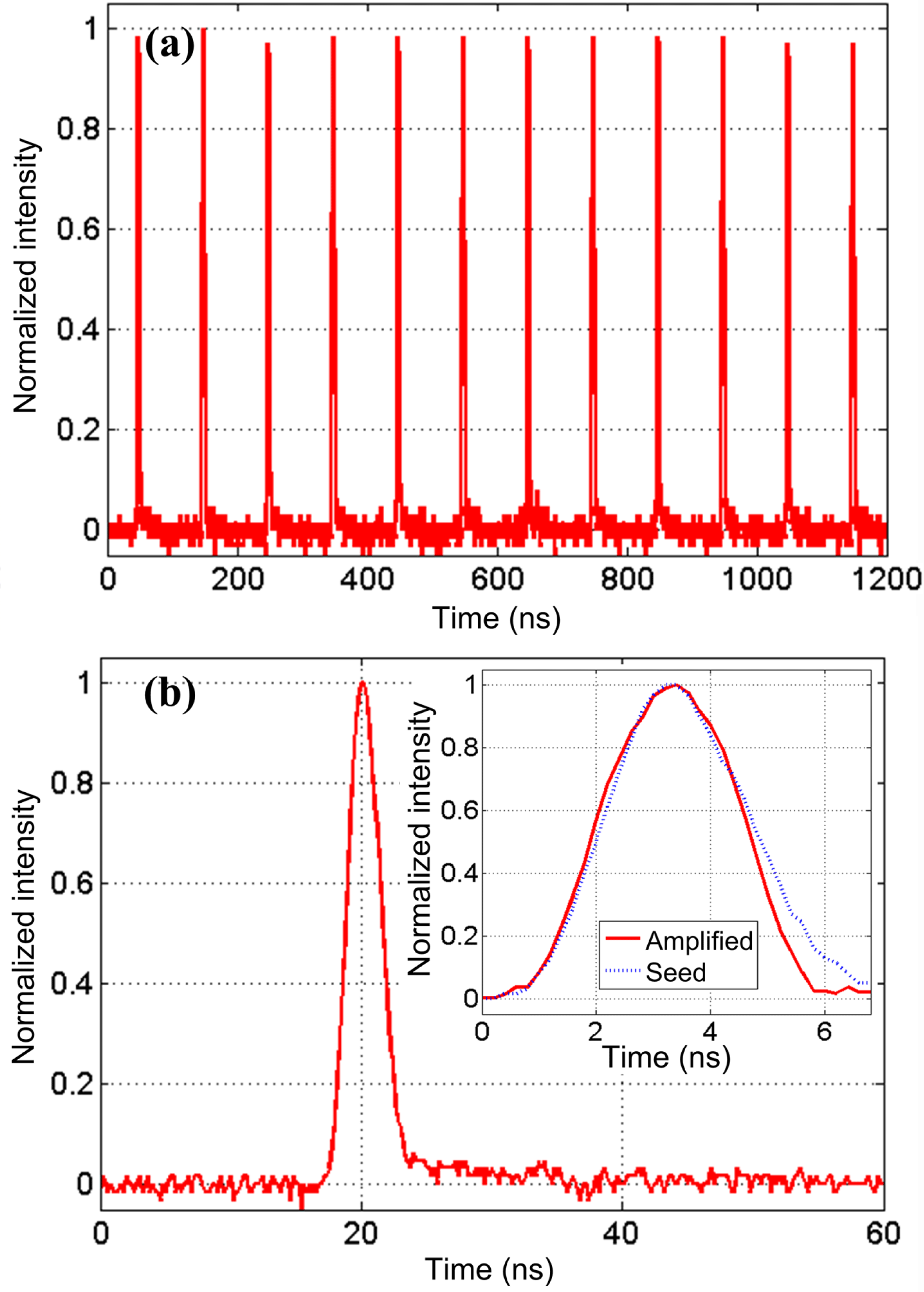
Figure 4. Typical pulse shapes of the laser pulses with (a) 12 periods and (b) 1 period.
The spectra of the pulses from the main amplifier were measured by using an optical spectrum analyzer with spectral resolution of 0.06 nm, as shown in Figure 5. We found that all of the 976 nm pump power was absorbed at 732 W, and the unabsorbed pump power was
![]() $-$
18.5 dB less than the output power at 913 W. Due to the high peak power of 28.6 kW, stimulated Raman scattering (SRS) was observed when the average power was 913 W. This means that the output power was mainly limited by SRS for the moment. In order to scale the output power, gain fibers with higher SRS threshold should be employed. For example, the fiber length can be shorter and the SRS threshold can be higher if a heavier Yb-doped fiber with higher absorption is used. Fibers with lager mode area and photonic crystal fibers (PCFs)[Reference Stutzki, Jansen, Jauregui, Limpert and Nnermann23] can also be employed to increase the SRS threshold and generate pulses with higher peak power.
$-$
18.5 dB less than the output power at 913 W. Due to the high peak power of 28.6 kW, stimulated Raman scattering (SRS) was observed when the average power was 913 W. This means that the output power was mainly limited by SRS for the moment. In order to scale the output power, gain fibers with higher SRS threshold should be employed. For example, the fiber length can be shorter and the SRS threshold can be higher if a heavier Yb-doped fiber with higher absorption is used. Fibers with lager mode area and photonic crystal fibers (PCFs)[Reference Stutzki, Jansen, Jauregui, Limpert and Nnermann23] can also be employed to increase the SRS threshold and generate pulses with higher peak power.
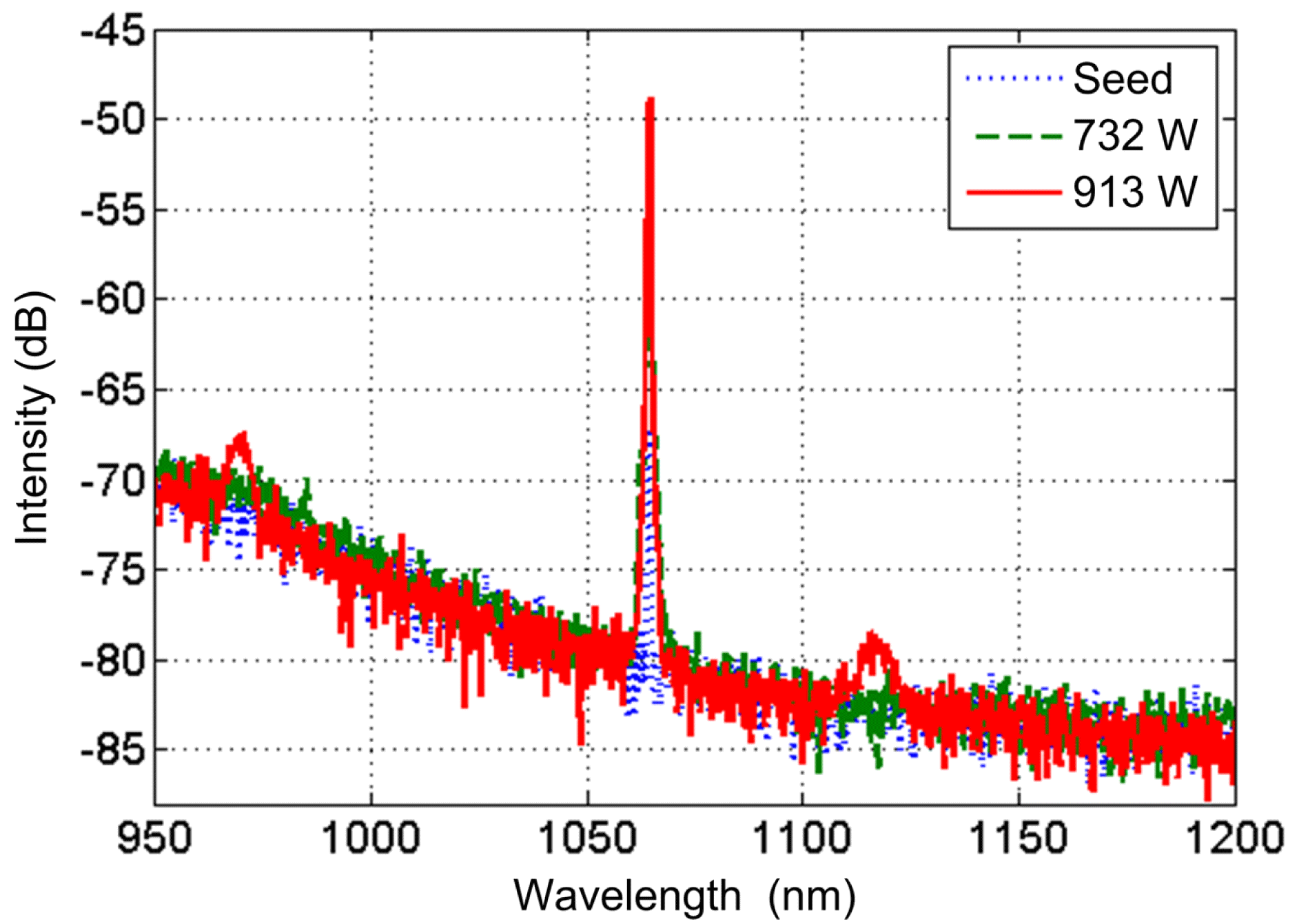
Figure 5. Spectrum of the pulsed laser output from the main amplifier.
3. Conclusion
In conclusion, narrow-linewidth nanosecond pulses with high average power of 913 W were generated from a monolithic all-fiber MOPA laser system. The pulsed laser has a peak power of 28.6 kW and a repetition rate of 10 MHz. SBS was suppressed by using a short pulse width of
![]() $\sim $
3 ns, and power scaling of the output power was mainly limited by SRS. Heavily Yb-doped fibers, PCFs, and fibers with larger mode area can be used to further scale the output power. Such a pulsed laser with high power, compact size, and robustness can find potential applications such as in nonlinear frequency generation and coherent beam combining.
$\sim $
3 ns, and power scaling of the output power was mainly limited by SRS. Heavily Yb-doped fibers, PCFs, and fibers with larger mode area can be used to further scale the output power. Such a pulsed laser with high power, compact size, and robustness can find potential applications such as in nonlinear frequency generation and coherent beam combining.
Acknowledgements
This research is sponsored by National Natural Science Foundation of China under No.11274386, Hunan Provincial Innovation Foundation for Postgraduate Study under grant CX2012B034, and Innovation Foundation for Graduates of the National University of Defense Technology under grant B120703.









